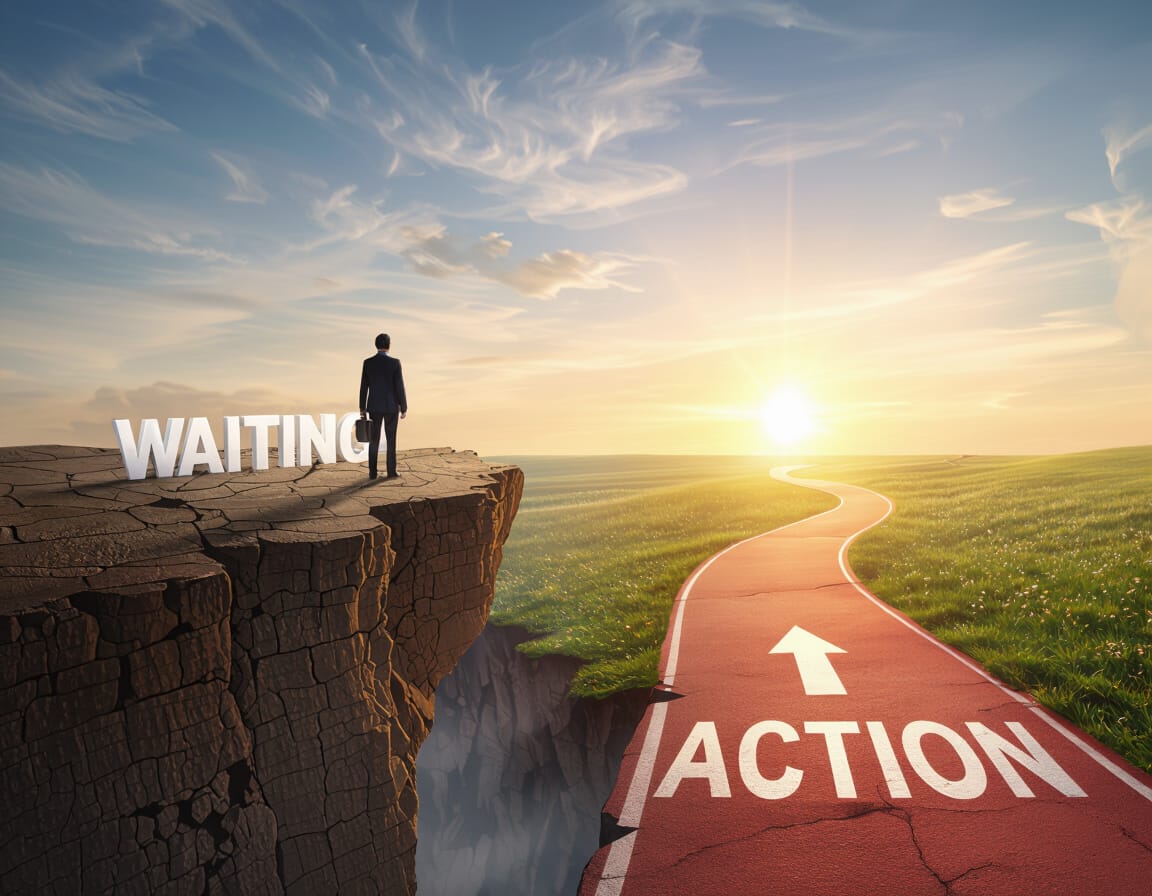We’ve all heard it before:
“Let’s wait and see how things play out.”
“It might be too soon to act.”
“The timing isn’t right just yet.”
These statements sound strategic. They feel cautious. They masquerade as wisdom.
But let’s be clear: waiting is not a strategy. It’s a stall tactic. And it often lives right next door to the most dangerous option in business, leadership, and life: doing nothing.
The Illusion of Safety in Inaction
We convince ourselves that waiting is safer. That it’s smart to gather more information, to wait for the “perfect” moment, or to let the dust settle. And sometimes, yes—rarely—patience is the right move.
But more often than not, “waiting” is fear wearing a mask.
It’s fear of being wrong. Fear of failure. Fear of judgment. So we label it as strategy. We call it “prudence” or “due diligence.” But if we’re honest, we’re just avoiding the discomfort of action.
Time Doesn’t Heal Strategy
Time can heal wounds. It can provide perspective. But it doesn’t fix broken strategies.
If your business is losing market share, waiting won’t stop the bleeding. If your career feels stagnant, waiting won’t make opportunities knock. If your team lacks direction, waiting won’t magically produce clarity.
What does? Movement. Action. Intentional decisions.
The Cost of Waiting
Here’s the real danger: while you’re waiting, someone else isn’t.
Someone else is iterating, launching, learning, adapting.
Someone else is taking the risks you’re afraid of—and reaping the rewards you’re hoping for.
Inaction has a cost. And it’s almost always opportunity.
When “Wait and See” Is Actually a Strategy
Let’s be fair: not all waiting is bad. There is a difference between strategic patience and passive delay.
Strategic patience means:
- You’re actively learning while you wait.
- You’ve defined specific conditions that will trigger action.
- You’ve set a deadline or decision point.
- You’re using the time to build, prepare, or strengthen your position.
If that’s your version of “waiting,” great—you’re not really waiting. You’re positioning. That’s different.
But if your plan is to “wait until things feel more certain,” you might be waiting forever.
Don’t Let Perfection Get In The Way Of Shit
Perfection is the enemy of progress. Waiting until everything is flawless often means never starting at all. “Good enough” gets things moving, while chasing perfection stalls momentum. Don’t let the fear of imperfection keep you from creating, shipping, or acting. Done beats perfect—every single time.
Start small. Test. Learn. Adjust.
Because even imperfect action teaches you more than perfect hesitation ever will.
Bottom Line
In the hierarchy of strategic choices, waiting sits uncomfortably close to doing nothing. And doing nothing is rarely a winning move.
So ask yourself:
Am I waiting because it’s smart—or because it’s safe?
And if it’s just fear in disguise, maybe it’s time to stop waiting, and start moving.
Because the world doesn’t wait.
And neither should you.



Leave a Comment